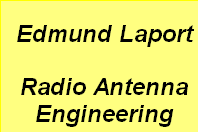

Antentop is FREE e-magazine devoted to Antennas and Amateur Radio an
Special page devoted to
Spreading and Underground Antennas

Custom Search
|
ANTENTOP-
01- 2019, # 023 |
Spreading and Underground Antennas |
|
|
|
||
Because of this the spreading and underground antennas were excellent
for field espionage operation from suburbs of large cities, and
for stationary operation from places located at remote distances
from large cities and direction finding facilities.
After WWII in the World were developed underground and spreading antennas
for stationary underground radio sites operating in a broad frequency
range - from 9 kHz up to 50 MHz. Spreading
antennas as well were used for field military communications as
reserve antennas. The information on usage of underground and
spreading antennas during World War II and modern times can be
found in the internet, see for example, Reference [1]. The theory for both underground vertical and underground horizontal antennas
was developed in different countries. However publications on
the thematic were classified. In the USSR only one book on the
subject was open for public and only after 20 years when the book
was published. The book is named Spreading and Underground Antennas,
Reference [2]. Design of Spreading and Underground Antennas Figure 1 shows a typical an old spreading antenna with the Diagram of Directivity.
The maximum direction of the spreading antenna is in line with
the element of the antenna. Originally such antenna was invented
by downed by shell vertical antenna of field radio set. |
How the antenna
does work? As is known from the theory of antennas, a horizontal
wire antenna, installed close to the ground, during operation
establishes in the ground a mirror image, see Figure 1. The currents flowing in an antenna and
the mirror image are mutually cancelled at low altitudes foiling
the antenna ability to radiate waves horizontally polarized. So
a spreading antenna should
poorly radiate horizontally polarized waves. It is known that vertically
polarized radio waves are not absorbed in soil to such a degree
as horizontally polarized radio waves. Therefore, with the spreading
antenna there is some radiation of vertically polarized radio
waves present. If soil under antenna has good conductive, the
antenna will be less effective compare to antenna placed above
the soil with poor conductivity. The spreading antenna as
well may be considered as a kind of feedline being created by
wire in the insulation and soil, as lossy
second wire of the feedline. Figure
2 shows a spreading antenna. Termination shown on the
end of the antenna is the theoretical load that shows losses on
radiation wire and losses of the electromagnetic energy in the
soil. Figure
3 shows an underground wire antenna. Underground antenna usually
is wire covered with plastic or aerial isolation by thickness
H and installed inside of the ground. |
|
|
Figure 1 Old Spreading Antenna with DD |
||
|
|
|
|
|
Page- 6 |
||
 |
 |
|
 |
|
|
|||
Just for Fun:

Powered byIP2Location.com
Thanks for your time!
Last Updated:
December 29, 2019 23:24






